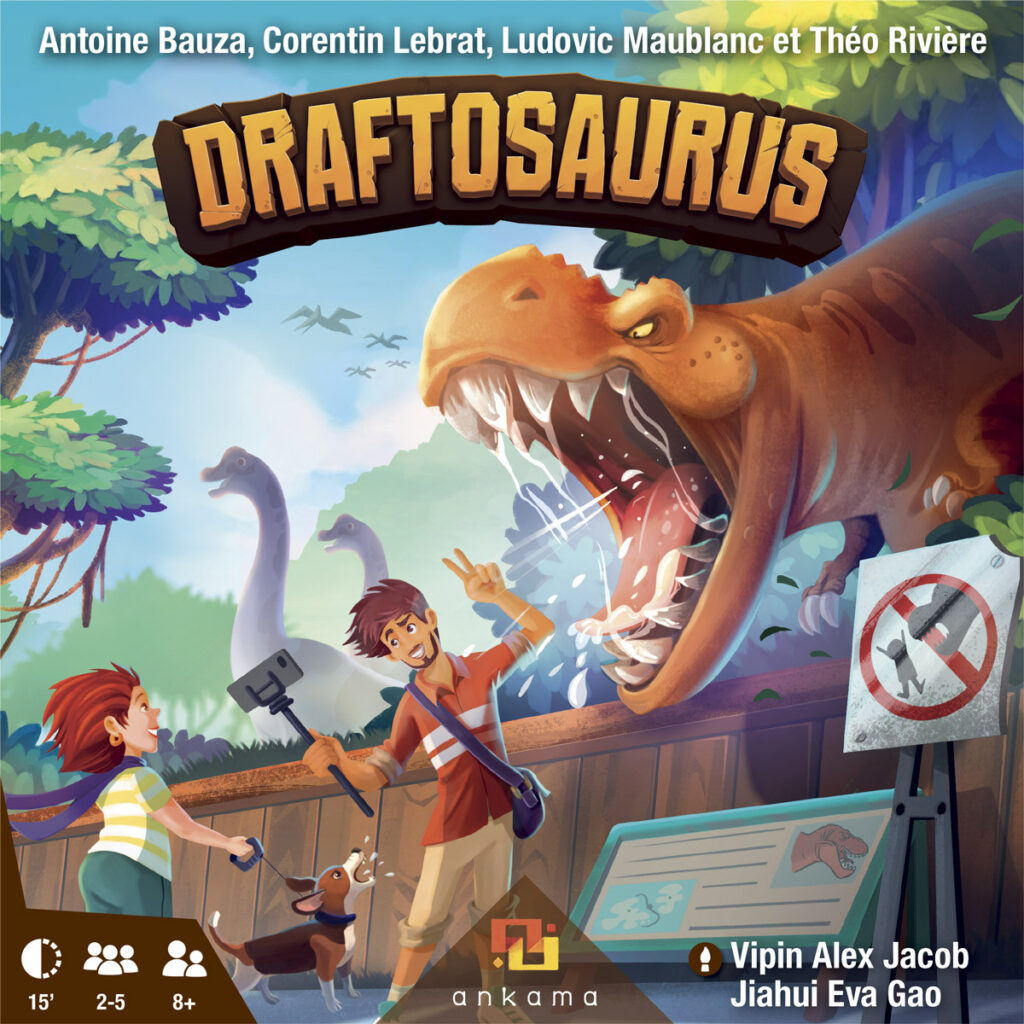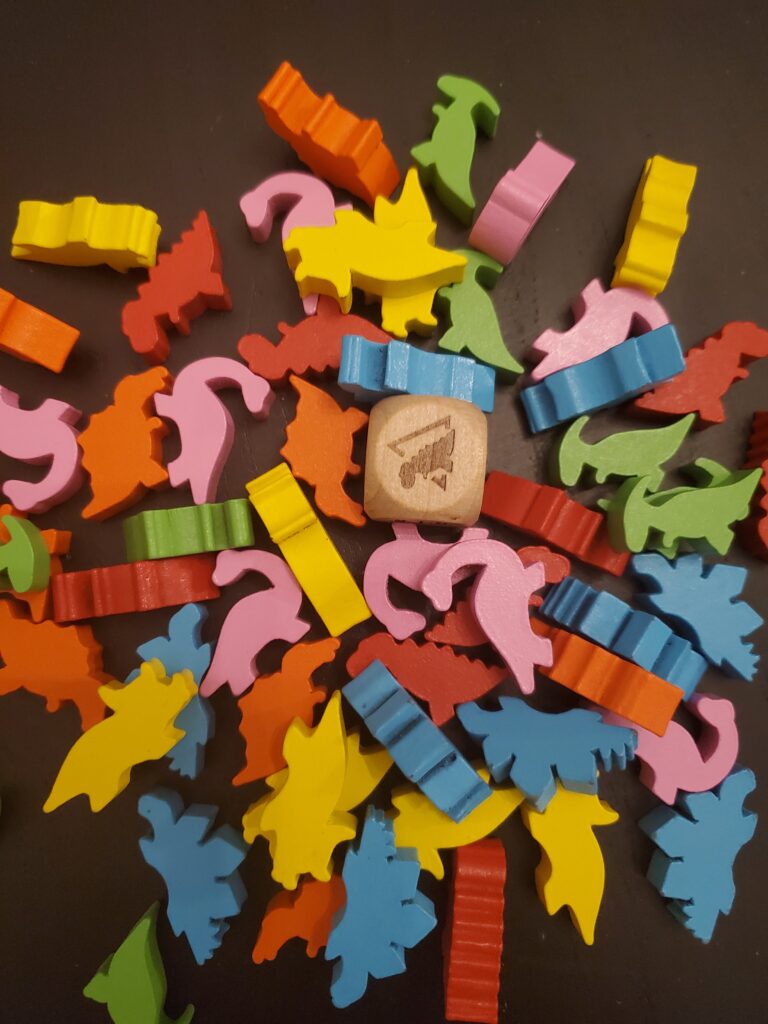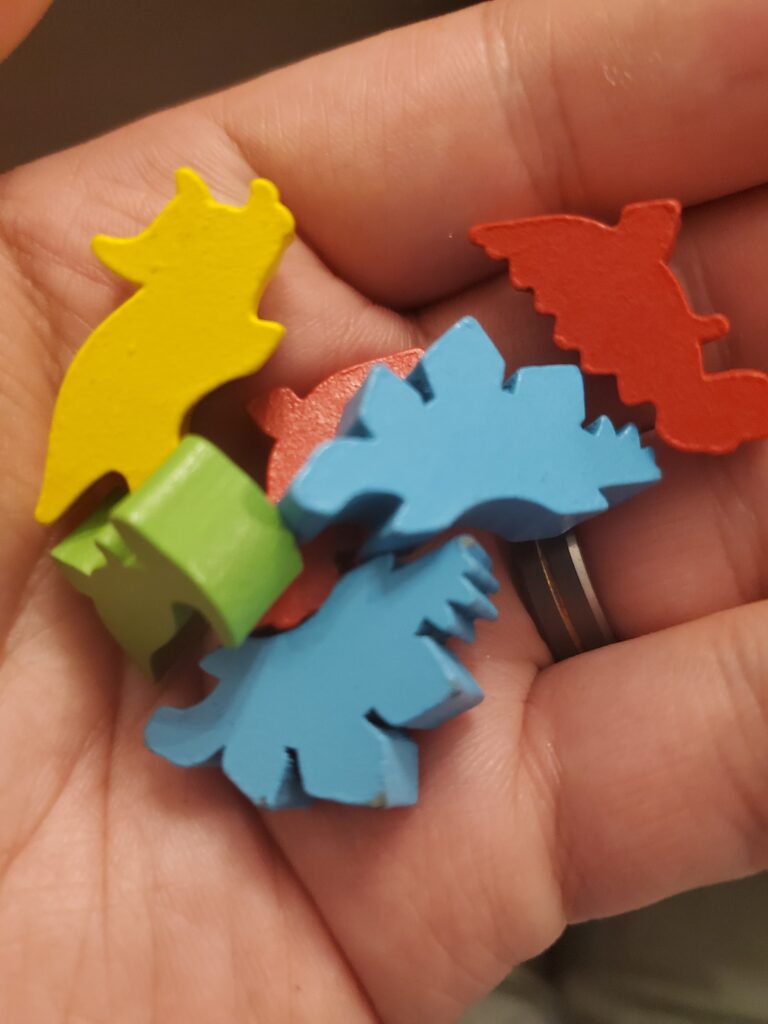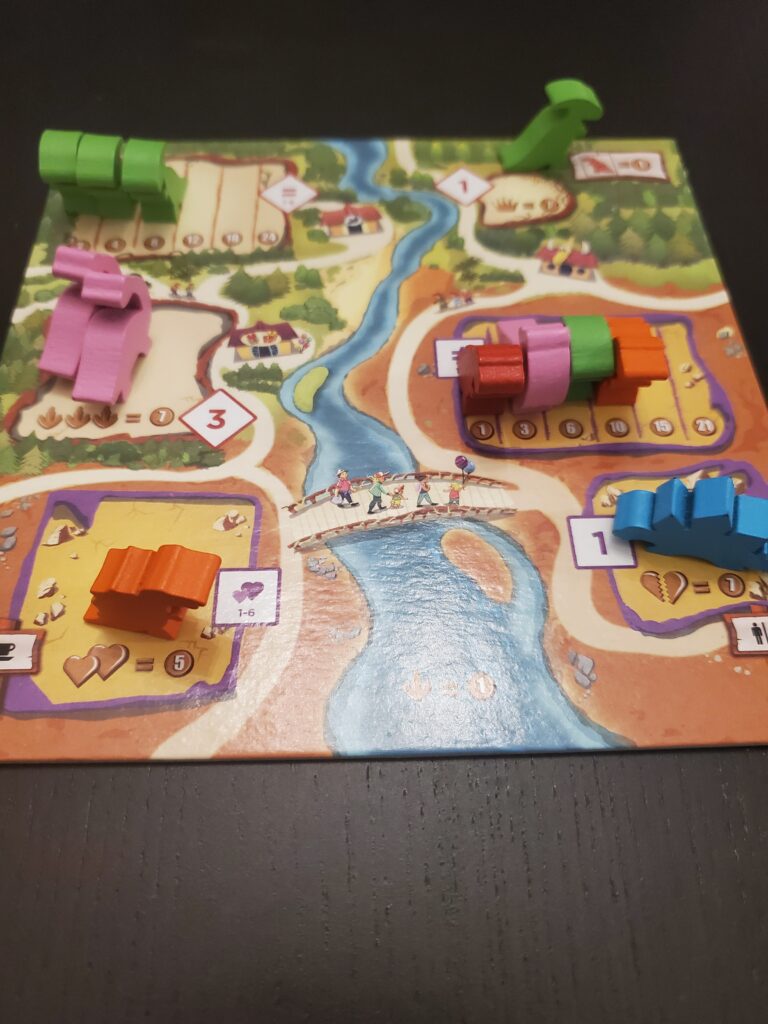
As Terry Pratchett and Neil Gaiman said in their book Good Omens, “The whole business with the fossilized dinosaur skeletons was a joke the paleontologists haven’t seen yet.” Well, that’s their world, and this is the world of Draftosaurus.
It is a 2-5 player game that takes about 20 minutes to play and is great for families and new gamers alike.
In Draftosaurus you are trying to get the most visitors to your “Dino Zoo”. You do this by drafting little wooden dino pieces (or meeples as we call them in the game world) into your zoo. Now, it is not as simple as picking a dino and placing it on your player board – there is more depth to it than that.
Let’s break down what the game comes with, how the game works and what it takes to win.
Inside the box comes 2 rule books, one in English and the other in French; 5 zoo boards, each with a summer side and a winter side; 60 dinosaurs: six different species with 10 of each; a placement die; and a draw bag.

To start the game each player gets a zoo and will all play on the same side (this time we played on the summer side). Each player will then take 6 dinos out of the bag and keep them secret from all other players. Depending on the player count, some dinos may be taken out of play. Once set up, the active player will roll the die and the fun begins!
The die the active player rolls is the placement die. All of the other players MUST obey the restraints imposed upon them by the die. The restraint die determines where you can or cannot place your dino that round. The active player can place anywhere in their zoo.
Once the die is rolled and you know your restriction, you take a look at the dinos in your hand. You will select one dino, keep it hidden in your other hand and once everyone is ready you will all reveal what dinos you picked at the same time. By the last turn in the round you will only have one dino so that will be easy.

Make sure you pay attention to what all the other players picked because there are only a certain number of each type of dino available. You don’t want to place your dino in a place that needs a lot of the same dinos if 3 out of the 4 of you picked the same dino on turn one. After you place your dino, you will take the leftover dinos in your hand and pass them on clockwise. The active player role will pass to the left and we start again. We do this until all dinos are gone. Start round 2, and this time the dinos are passed counterclockwise. Continue until all the dinos are gone, then score.
There are 7 scoring areas on the board.
– Firstly, there is the Forest of Sameness – all dinos in this pen must be the same species. You will get points for the number of dinos in the pen to a max of 24 points.
-You then have the Woody Trio. This pen needs exactly 3 dinos in it for 7 points. Any more or less will net you 0 points.
-Next is the Prairie of Love. This pen will bring you 5 points for every same-species dinosaur couple up to 3 pairs total.
-The Solitary Island pen can only hold one dino and at the end of the game it must be the only one of its species in your zoo.
-In the Meadow of Differences, the pen can only hold dinosaurs of different species.
-The last scoring area is the King of the Jungle, and this pen can only hold one dino in it. At the end of the game this pen is worth 7 points if you have equal to or the most of that species compared to the other players.
The last two scoring mechanics you need to know about are the river and T-Rex. The river is a special zone, not a pen, so there are no restrictions, but it is still part of your zoo. Any dinos in the river are worth one point apiece. T-Rexes are worth one additional victory point per pen. Now that we know all about the basics of the game, let me give my overall opinion of the game.

Let’s start with the rule book. The rule book is laid out fairly well and takes you through the game logically so that’s nice. The rule book has pictures of everything which makes it easy to follow along.
The dino meeples are really nice; they are all different shapes and colors. This makes looking at other players’ zoos to see what they have really easy.
The bag that holds the dinos is my one big complaint about the game. I have big hands and it’s hard to get my hand in the bag to draw dinos, So I had to upgrade to a bigger bag.
The player boards are nice, simple, and clean. It makes teaching the game a cinch.
The game is easy to learn and teach – I was able to teach this game to someone in just 5 minutes. We played a full game in about 12 minutes and–get this–he won the game. If we were not in a hurry we would have played again.
That is what I love about this game. It is quick and you can finish a game and start another right away. Whenever we play, no one ever feels out of the game. Everyone is always just one different placement of a dino from winning.
I highly recommend this game for players of all skill levels. This game is great for families and for teaching kids about groupings.
The game can also be a fun way to teach about the Church rules and free will. The Church says we have to go to Mass on Sunday. It feels confining but we still have the free will to pick the church we go to and what time we go. Just because you feel confined doesn’t mean there isn’t a choice to holiness. <3
Game Play: 4/5
Setting/Theme: 3/5
Art: 3/5
Components: 4/5
Replayability: 4/5
